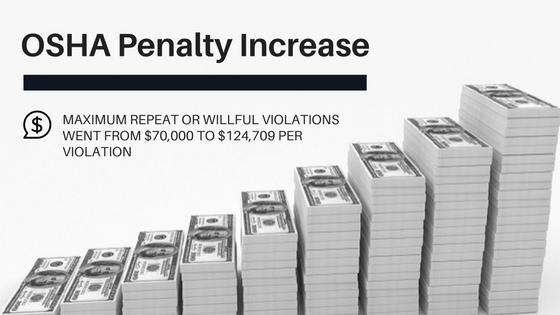OSHA News: the agency finally gets its due—after decades of not being able to raise its penalties, the time has finally come, and they're playing catch up to make up for lost time (and money).
Maximum penalties for employers violating OSHA laws have remained flat since 1990. Curiously, that year a federal law was passed calling for increases in all federal civil penalties each year, to allow governmental agencies to keep up with inflation.
OSHA, however, was exempt from the increases. In the meantime, inflation has taken the bite out of their stagnant penalties in the 16 years since 1990.
OSHA No Longer Exempt from Inflation Adjustment Increases
Now, thanks to the Bipartisan Budget Act of 2015, signed in effect last November 2015, that's all changing this month. Beginning August 2, 2016, maximum penalties increased - and not by a little. Here's a summary of this important OSHA news.
- Maximum serious violations (when serious injury or death occur) went from $7,000 to $12,477 per day
- Failure to abate also increased from $7,000 to $12,471 per day
- Maximum repeat or willful violations went from $70,000 to $124,709 per violation
No Longer Stuck in a Time Capsule
You might notice that the new penalties represent a jump of more than 75% over original maximum penalties. That's because under the new act, OSHA has been allowed to make up for all the years since 1990, during which its penalty structure remained stuck in time.
What's more, they're allowed further increases each year going forward, too, in order to continue to adjust for inflation. It seems OSHA is finally getting its due.
According to OSHA officials, however, employers should not view the increases as anti-business. Rather, they're about the safety of their employees, a concern they share with OSHA.
“The goal of OSHA is not to put employers out of business but ensure employees go home safe."
-Jeff Funke, director of OSHA in Omaha
One final note: keep in mind that states have the right to charge even more for workplace violations, and may only use the federal maximums as a starting point.
